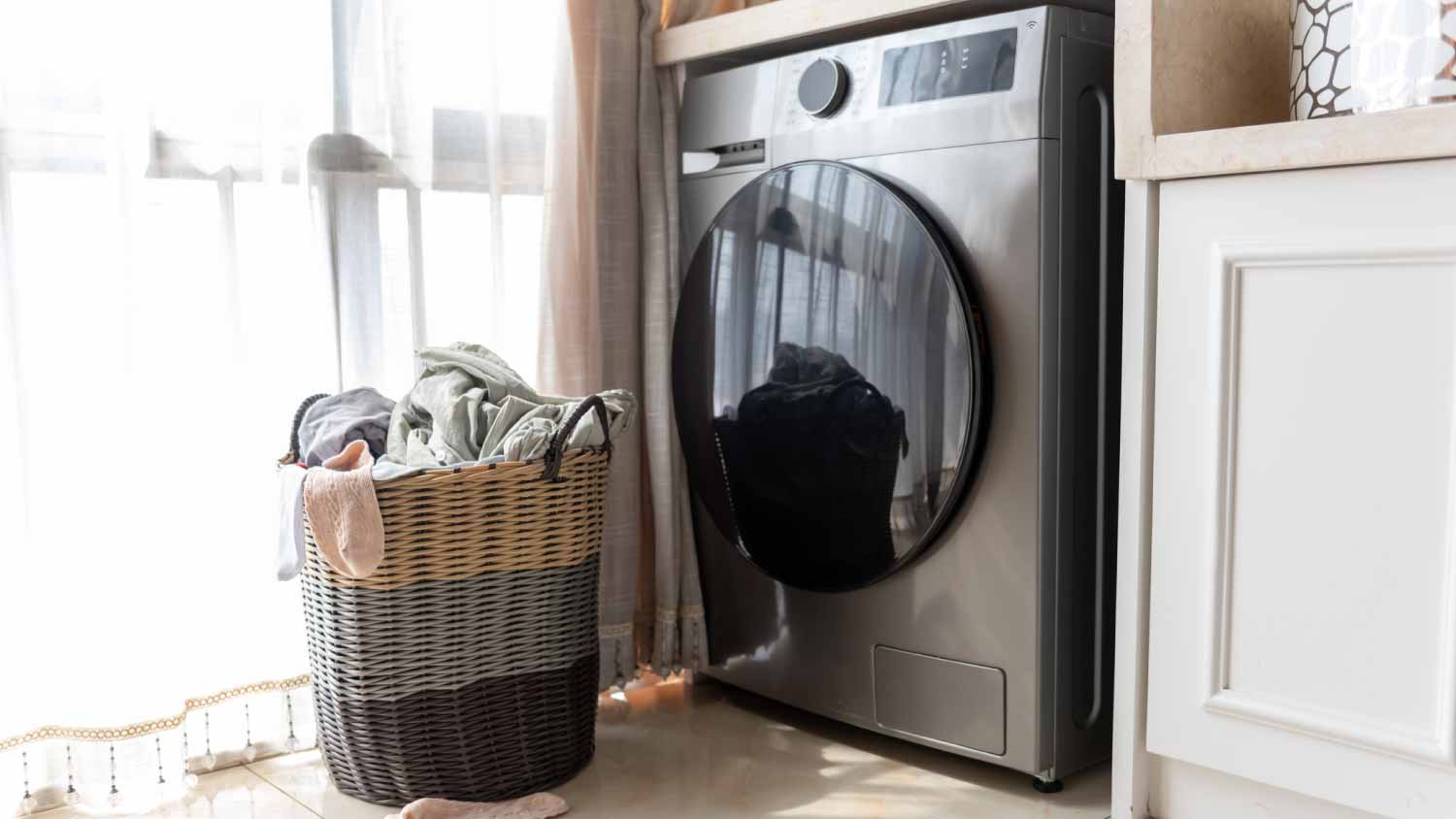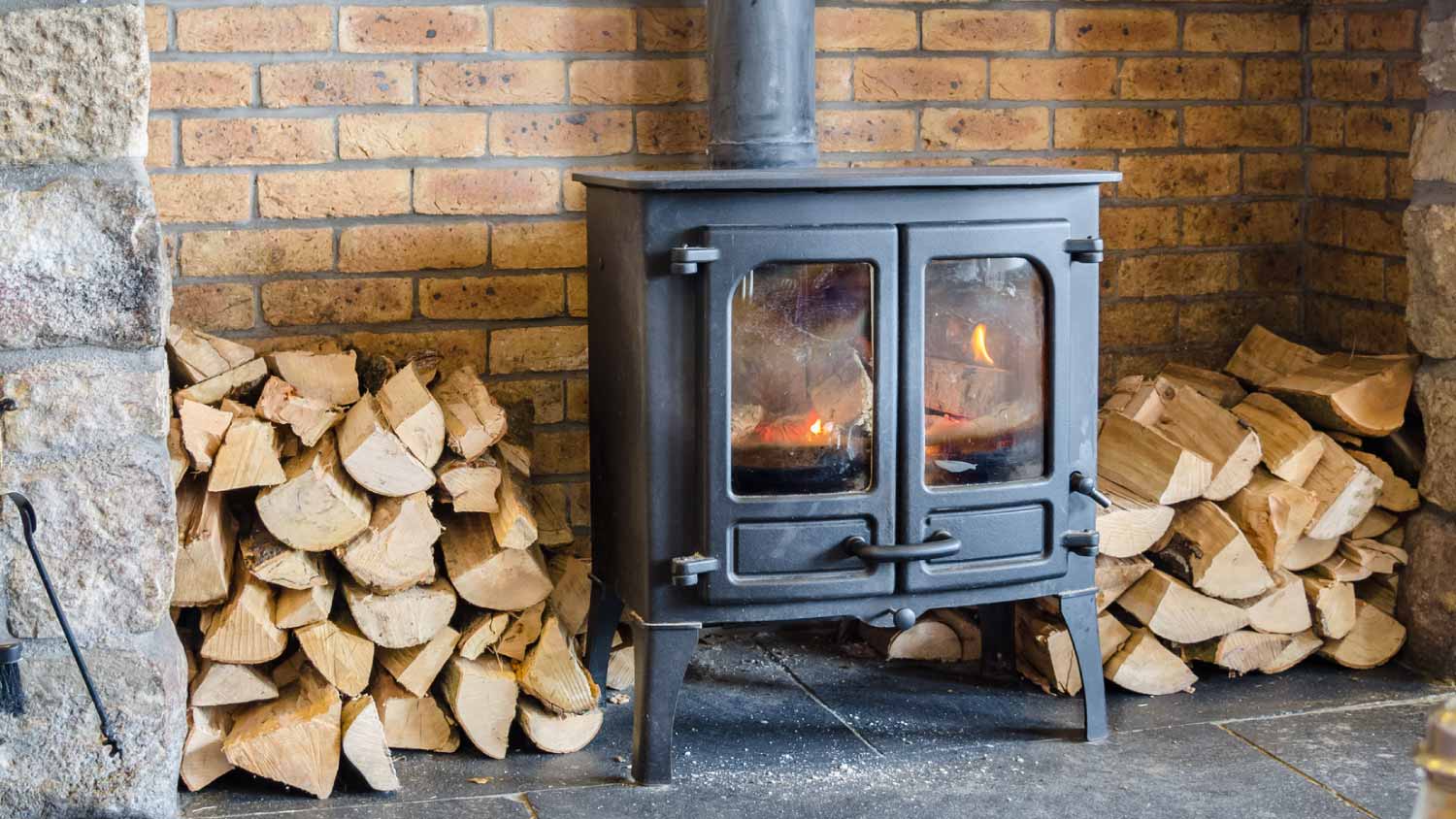How Do Wood Stove Fans Work? The Secret Ingredient to a Warmer Room All Winter Long
Warm up to energy savings


Wood stove fans use the heat produced by the stove to circulate warmth in the space.
Installing a wood stove fan has environmental and cost savings benefits.
Fans vary in blade design and size, number of blades, and material construction.
Automatic operation and minimal upkeep make them low-maintenance.
In the realm of efficient home heating, understanding how wood stove fans work can significantly enhance your comfort and cost efficiency during colder months. Fans circulate warm air generated by a wood-burning stove throughout your living space (and they don’t even require electricity). Let’s get into the mechanics behind wood stove fans, their benefits, and considerations for installation.
How Do Wood Stove Fans Work?
Wood stove fans, also known as heat-powered stove fans or eco fans, use the heat produced by your wood-burning stove to generate electricity-free airflow. Unlike traditional fans that rely on electricity, these fans operate on the simple principle of thermoelectric power generation.
Let’s take a trip back to science class to see what exactly that means and how wood stove fans work:
Heat absorption: The base of the wood stove fan is equipped with a thermoelectric module—a part that’s sensitive to temperature differences. As the stove heats up, the base of the fan absorbs heat.
Electricity generation: The thermoelectric module converts the heat energy into electricity. This process is based on the Seebeck effect. Long story short, the temperature difference between the base of the fan and the module creates voltage.
Fan operation: The generated electricity powers a small motor that spins the fan blades. As the blades rotate, they push hot air horizontally across the stove's surface and into the room, effectively distributing warmth.
Benefits of Wood Stove Fans

Wood stove fans offer several advantages that make them popular among those looking to maximize the efficiency of their wood-burning stoves.
No Electricity Required
Wood stove fans operate without external electricity, making them eco-friendly and reducing your household energy consumption. This feature helps you avoid a spike in your utility bills.
Improved Heating
By circulating warm air more effectively throughout the room, wood stove fans help maintain a consistent temperature and reduce cold spots. This even distribution of heat enhances comfort, especially in larger or multi-room spaces.
Reduced Heating Cost
Efficient heat distribution means that you can achieve optimal warmth with less fuel. This translates to cost savings over time as you burn less wood or other fuel sources to maintain a comfortable indoor environment.
Automatic Operation
Once placed on top of a heated stove, the fan starts automatically as the stove warms up and shuts off when the stove cools down. This hands-free operation requires no manual adjustment, offering convenience and peace of mind.
Low Maintenance
Wood stove fans are low-maintenance parts that only require occasional dusting or cleaning of the blades to ensure optimal airflow. Their durable construction and straightforward operation minimize the need for repairs or replacements.
What Happens if You Don't Have a Wood Stove Fan?

Without a wood stove fan, the distribution of heat from your wood-burning stove may be uneven. Warm air tends to rise directly above the stove, leaving other areas of the room cooler. This can result in discomfort, especially in larger spaces, and may require higher fuel consumption to maintain a consistent temperature throughout.
Are All Wood Stove Fans the Same?
These fans, like other wood stove parts, come in various types and designs, each offering distinct benefits:
Blade design: Fans with larger blades circulate more air but may require higher temperatures to start spinning. Smaller blade designs start operating at lower temperatures but may move less air.
Number of blades: Some fans have two blades, while others have four or more. More blades can increase airflow but might require higher temperatures to operate efficiently.
Materials and durability: Fans made from durable materials like anodized aluminum or heat-resistant plastics are designed to withstand high temperatures and prolonged use.
Can You Install a Wood Stove Fan Yourself?
Installing a wood stove fan is a straightforward DIY project. Fans come fully assembled and ready to use out of the box. Here are the basic steps:
Position the fan on top of your wood-burning stove, ensuring it sits securely on a flat surface.
Allow the stove to reach its operating temperature (around 150 degrees Fahrenheit to 300 degrees Fahrenheit) to activate the fan.
Regularly clean the fan blades and ensure there are no obstructions around the fan to maintain optimal airflow.
If you're unsure about installing the fan yourself or have other problems with your appliance, local wood stove companies or heating professionals can help and get your home back to cozy, warm bliss in no time.
Frequently Asked Questions
Wood stove fans are designed to operate quietly, emitting only a subtle hum from their motor. This low noise level ensures minimal disruption in your living space, allowing you to enjoy the warmth without distraction. The fan blades, which are engineered for efficient air circulation, contribute to the overall quiet operation. This makes wood stove fans a practical choice for maintaining a peaceful environment while effectively distributing heat throughout your room or home.
Selecting the right size wood stove fan depends on the size of your stove and the room it heats. Larger stoves or rooms may benefit from fans with larger or multiple blades, as these can move more air efficiently. Consider the fan's specifications and airflow capacity to match it with your stove's heat output for optimal performance.
The average life span of a thermoelectric fan operating seasonally is two to three years. However, the life span of a wood stove fan depends on its quality, usage, and maintenance. Regular cleaning of the blades and ensuring the fan operates within its recommended temperature range can help prolong its life span.
While wood stove fans are effective for improving heat distribution, they rely on the stove reaching a certain temperature to operate efficiently. If the stove does not generate enough heat, the fan may not start or may not move air effectively. Additionally, like any fan, wood stove fans cannot cool a stove or reduce its heat output—they only redistribute existing warmth.



.jpg?impolicy=leadImage)

- Appliance Repair Companies
- Washing Machine Repair
- Dryer Repair
- Refrigerator Repair
- Dishwasher Repair
- Oven Repair
- Wood & Pellet Stove Repair
- Freezer Repair Services
- Wood Stove Services
- Gas Stove Repair
- Emergency Appliance Repair Companies
- Ice Maker Repair
- Gas Appliance Repair
- GE Appliance Repair
- GE Refrigerator Repair
- GE Dryer Repair
- GE Dishwasher Repair
- GE Washing Machine Repair
- Samsung Appliance Repair
- Samsung Refrigerator Repair
- Samsung Dryer Repair
- Samsung Washer Repair
- Samsung Dishwasher Repair
- Samsung Oven Repair
- Whirlpool Repair
- Whirlpool Refrigerator Repair
- Whirlpool Washer Repair
- Whirlpool Dryer Repair
- Whirlpool Oven Repair
- Maytag Appliance Repair
- Maytag Refrigerator Repair
- Maytag Washer Repair
- Maytag Dryer Repair
- Maytag Dishwasher Repair
- Kitchenaid Appliance Repair
- Kitchenaid Oven Repair
- Kitchenaid Refrigerator Repair
- Kenmore Appliance Repair
- Kenmore Dishwasher Repair
- Kenmore Washer Repair
- Kenmore Dryer Repair
- LG Refrigerator Repair
- Bosch Appliance Repair
- Kenmore Refrigerator Repair
- LG Appliance Repair Services
- GE Microwave Repair
- Electrolux Appliance Repair
- Electrolux Washer Repair
- Kitchenaid Dishwasher Repair Services
- Wood Stove Inspection
- Dishwasher Installation
- Trash Compactor Repair










